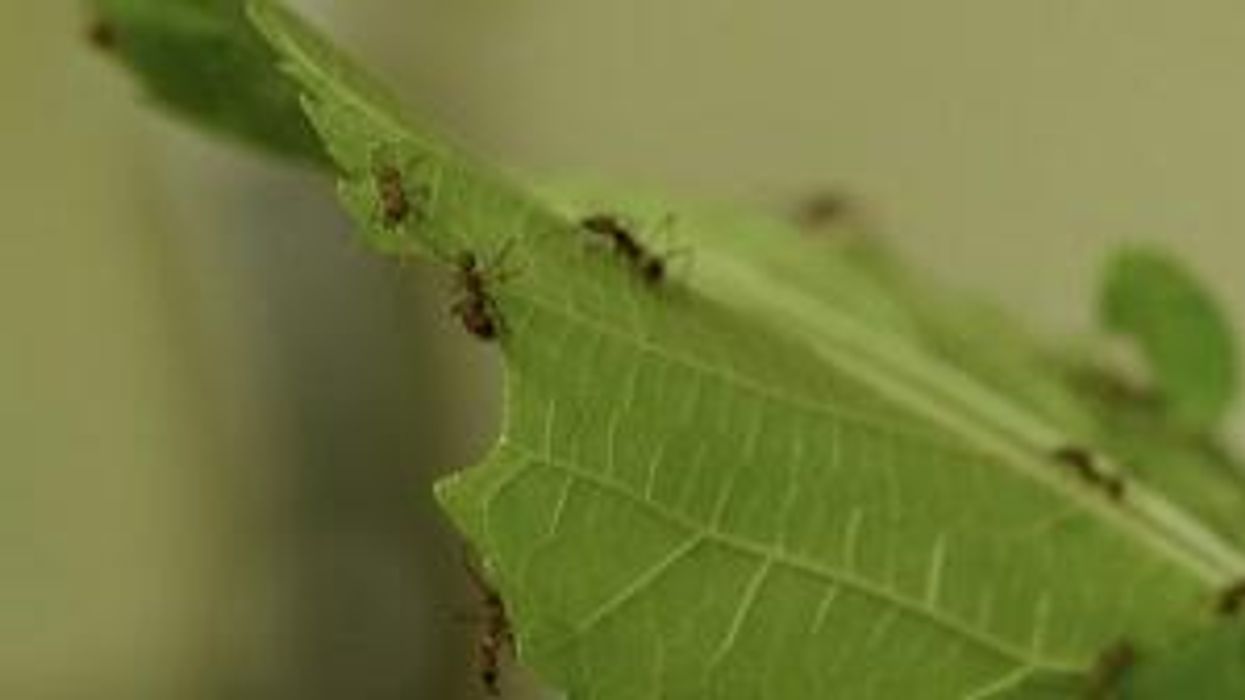Sinead Butler
Mar 29, 2022
Ants in Your Pants! These Leaf Cutter Ants Are Pretty Amazing!
Independent
Texas has been invaded by ants swarms of "'crazy" red ants which have blinded rabbits with their spewing acid.
The invasive ants called Tawny crazy ants (Nylanderia fulva) are originally from South America have also wreaked havoc causing electrical shorts by damaging electrical devices, breaker boxes and AC units.
During the last two decades, the species has spread across the southeastern US states, dispelling native insects, reptiles and small animals like rabbits.
Edward LeBrun, a research scientist at the University of Texas, Austin, that studies the species, told Newsweek: "Rabbits are born in burrows under the ground and I expect that these burrows are very hospitable for crazy ants. In these environments, when tawny crazy ants are at high densities, every suitable nest site is occupied, so I expect the crazy ants move in and simply swarm the rabbits. They spray acid when they fight."
An example of the ant species impact is in 2016 when Estero Llano Grande State Park in Weslaco, Texas had noted it was losing its insects, scorpions, snakes, lizards and birds, as well as their rabbits being blinded with acid as a result of an infestation.
But now there may be good news for bunnies in the form of a biological kryptonite to prevent the ants from invading, as a new study has found that infection by a fungal pathogen Myrmecomorba nylanderiae can cause the species to decline.
Sign up to our free Indy100 weekly newsletter
As part of the study, 15 different areas where the ants populated were studied over the course of eight years and scientists found that for every place that had the fungus, the population of ants fell - with 62 per cent of those ant colonies completely disappearing.
“I think it has a lot of potential for the protection of sensitive habitats with endangered species or areas of high conservation value,” Edward LeBrun, lead author of the study, said.
"This doesn't mean crazy ants will disappear," LeBrun said. "It's impossible to predict how long it will take for the lightning bolt to strike and the pathogen to infect any one crazy ant population. But it's a big relief because it means these populations appear to have a lifespan."
The origins of the fungus are not known but it's thought to have come from the ant's native South America and it's also believed that the ant numbers dwindle because the fungus shortens their lifespan, making survival through the winter season more difficult.
However, this may not spell the end for the crazy ants as researchers say infected ants go through “boom-and-bust cycles” due to the frequency of infection fluctuating.
To test the effectiveness of the fungus, scientists made use of it in Estero Llano Grande State Park by putting ants with the fungal pathogen in nesting sites and leaving hot dogs near there to attract the local population to mix with the fungal-infected ants.
Results showed the fungus spread to the entire ant colony within a year, then they saw a decline in the population in the year after, now the crazy ants are gone causing local wildlife to return.
Due to this success, similar tests will be carried out in other areas of Texas with ant infestations.
Have your say in our news democracy. Click the upvote icon at the top of the page to help raise this article through the indy100 rankings.
Top 100
The Conversation (0)














